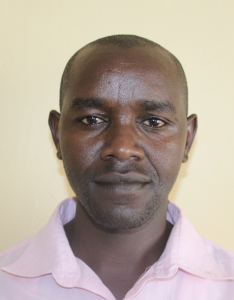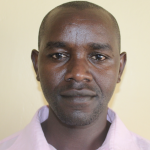It was partially sunny in the morning when we first visited Ebutindi, with thick clouds covering the sky that warmed the earth below. We really enjoyed doing our baseline survey during this weather.
Ebutindi is a very remote place with a good road network that connects neighboring schools and health centers and also helps farmers to ferry their goods to the markets. The place is very peaceful with just a little noise from motorbikes carrying people to the market as well as other destinations. The place looks very green because of tree plantations and farms. The crops grown here are vegetables of every kind, bananas, arrowroots, and sugarcane. The majority of people live in houses made of mud walls, iron sheet roofs, and wooden doors.
Community members wake up as early as 6 in the morning, eat their breakfast, and go to their farms for the day's farming activities. The day normally ends in the evening when community members head back to their homes to eat dinner and rest. Farmers engage in tilling their land, planting, and harvesting ready crops.
All of the day's activities are made much more difficult without the presence of safe, clean drinking water. The main water source is Tondolo Spring, which is entirely unprotected and therefore open to contamination. There are solid materials floating in the water, mud stirs up as people fetch water, and algae is growing on the surface. Containers are dunked under the surface with care to avoid any debris.
People do their best to avoid the dirty spring by putting barrels and containers outside during a rainy day. But it doesn't always rain, making Tondolo Spring especially busy when there's no rainwater left. If no action is taken, the 370 community members will continue to suffer from waterborne diseases that put lives at risk.
"Sometimes we as a community are left with no option but to consume whatever the available water regardless of the condition, either safe or unsafe as long as we get something to quench our thirst. When people expose themselves to drinking unsafe water, they contract diseases that are very dangerous to the health," said Mrs. Dishon.
What we can do:
"Though many people have clotheslines, some of them don't understand the meaning of using them which lead to people drying their clothes on the ground, on the roofs, and on the flowers. Some of our community members have latrines that are not yet completed as they are built halfway which makes the users not to be very comfortable accessing it," Mrs. Dishon explained.
Spring Protection
We will protect the spring to ensure that the water is safe, adequate, and secure. Construction will keep surface runoff and other contaminants out of the water. There will be stairs down to the collection point and a pipe that can easily fill water containers. With the community’s high involvement in the process, there should be a good sense of responsibility and ownership for the new clean water source.
Training
Community members will attend hygiene and sanitation training for at least two days. This training will ensure participants have the knowledge they need about healthy practices and their importance. The facilitator plans to use PHAST (Participatory Hygiene and Sanitation Transformation), CLTS (Community-Led Total Sanitation), ABCD (Asset-Based Community Development), group discussions, handouts, and demonstrations at the spring. One of the most important topics we plan to cover is the handling, storage, and treatment of water. Having a clean water source will be extremely helpful, but it is useless if water gets contaminated by the time it’s consumed.
Training will also result in the formation of a committee that will oversee operations and maintenance at the spring. They will enforce proper behavior around the spring and delegate tasks that will help preserve the site, such as building a fence and digging proper drainage. The fence will keep out destructive animals, and the drainage will keep the area’s mosquito population at a minimum.
Sanitation Platforms
The pit latrines in the community are made of mud which makes them hard to keep clean.
On the final day of training, participants will select five families that should most benefit from new cement latrine floors.
Training will also inform the community and selected families on what they need to contribute to make this project a success. They must mobilize locally available materials, such as bricks, clean sand, hardcore, and ballast. The five families chosen for sanitation platforms must prepare by sinking a pit for the sanitation platforms to be placed over. All community members must work together to make sure that accommodations and food are always provided for the work teams.

 Protected Spring
Protected Spring
 Rehabilitation Project
Rehabilitation Project










































